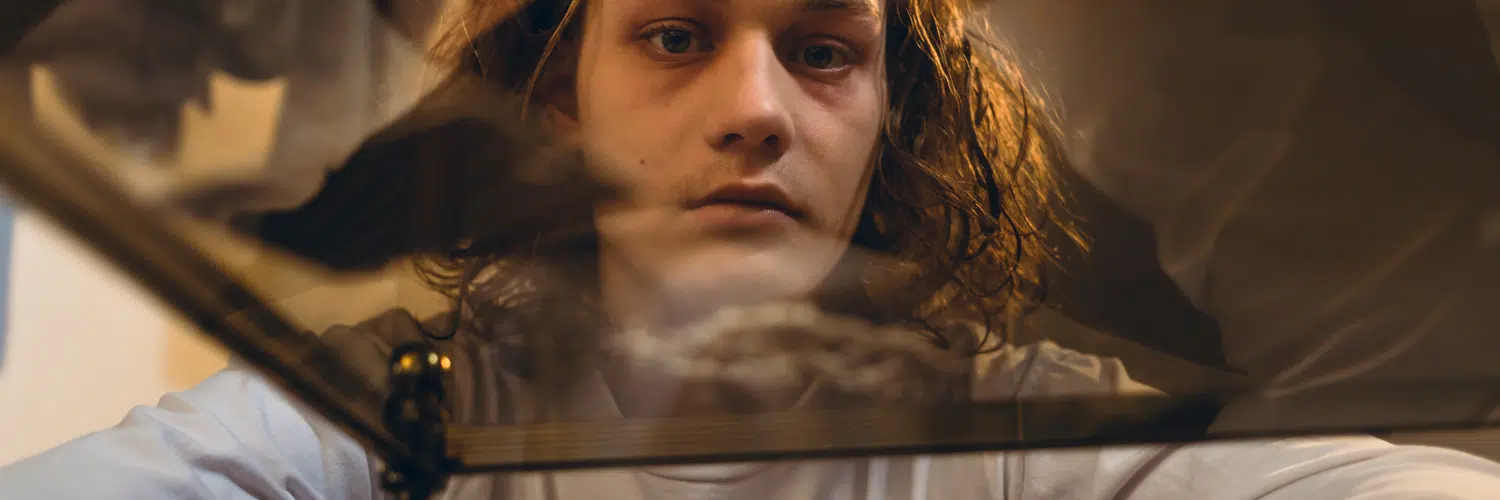
Why do Teens Use Heroin?
The National Center for Drug Abuse Statistics states at least one in eight teens abused illicit substances in 2019. Of this number, a large majority of these teens use heroin. Between 2016 and 2020, the rate of illegal drug use among American eighth-graders increased by more than 60%. The same report shows that 850 teens and young adults lost their lives to a heroin overdose in 2019 alone.
What is Heroin?
The drug heroin is manufactured from ingredients harvested from the opium poppy. These plants, grown in Colombia, Asia, and Mexico, contain the chemical morphine. Because heroin is manufactured from naturally occurring chemicals, it is classified as a natural opioid. There are different forms of heroin, depending on the manufacturing process. The most common is a fine white powder. Other types of heroin include a brown powder or a sticky, black substance called black tar heroin.
It is not uncommon to hear heroin referred to by its street names. Common examples of these include hell dust, smack, and many others. Using heroin is easier than some other drugs because it can be administered or “taken into” the body in several ways. In powder form, heroin can be smoked, snorted, or mixed with liquid and injected into a vein. Some teens with a heroin addiction may mix powder heroin with crack cocaine to create a more potent drug, a practice called speedballing.
The composition of black tar heroin makes injecting it more dangerous than white or brown powdered forms of the drug. For this reason, those who use black tar heroin grind it into a powder for snorting. Black tar heroin is also frequently vaporized (a process referred to as chasing the dragon) or administered in suppository form.
Why do Teens Use Heroin?
There are a few reasons why teens use heroin. The first is experimentation. Peer pressure can be positive or negative. Some teens may feel “pressure” to engage in sports, academic pursuits, or other extra-curricular activities to remain part of desired social groups or spend time with friends. This type of peer pressure generally has positive outcomes. However, there are other types of peer pressure, and those often have lasting, harmful impacts on teens. It is the negative or harmful peer pressure that typically leads teens to experiment with substances like heroin for the first time.
Another reason teens begin using heroin follows the same reason why adults often turn to this potentially deadly drug; as a substitute for prescription opioids. Heroin is an easily obtained street drug that many turn to after developing an addiction to prescription opioids (prescription painkillers). When their prescription ends, or they no longer have access to a prescription drug for other reasons, they turn to heroin. Heroin use mimics the effects experienced when using drugs such as Oxycodone. Therefore, teens with a prescription opioid addiction may see heroin as a suitable alternative to satisfy cravings for opioids. Suppose your medical provider prescribes opioids for your teen. In that case, it is crucial to understand their effects, what opioid addiction looks like and how to help your teen if they develop a dependency on these powerful substances.
Short and Long-Term Effects of Heroin Use on The Body
When teens use heroin, the effects on the body and mind occur rapidly. Once in the bloodstream, heroin connects (binds) to specific receptor sites in the brain, spine, and other areas called opioid receptors. Opioid receptors are the areas of the brain used to sense and relay feelings of pain and pleasure. They also play a vital role in maintaining life-sustaining body functions such as breathing and heart rate.
In the last decade, the rate of heroin use by people of all ages has increased dramatically. Researchers believe the increase in heroin addiction (and overdose) rates is linked to the nationwide effort to reduce the number of opioid prescriptions written by medical providers. The use of heroin mimics the effects of opioid pain killers like Vicodin and Oxy. Several studies suggest prescription painkillers frequently act as a “gateway drug” to heroin use. Surveys conducted within the last few years, such as the National Survey on Drug Use and Health, indicate a percentage of those who misused prescription opioids often switched to heroin.
Signs Your Teen May Have A Heroin Addiction
Heroin is a potent and highly addictive drug, and the side effects of its use can put your teen at an increased risk of injury or death from overdose. For most users, tolerance to the effects of heroin develops quickly, leading the user to need higher and more frequent doses of heroin to achieve their desired high. With increasing tolerance comes an increased risk of overdose.
There are several physical, psychological and behavioral symptoms of heroin addiction. In most cases, you will likely notice the physical symptoms of heroin addiction in your teen before anything else. Within seconds after injecting heroin, feelings of euphoria and increased happiness occur. Although other methods of heroin use take longer to produce the same effects, once the drug reaches the brain, indications the use is “high” will present.
The most common physical signs of heroin use in teens include slowed breathing, stomach problems, dry mouth, itching, vomiting, flushed skin, and constricted pupils. Those who use heroin regularly frequently need to use laxatives or stool softeners due to chronic, severe constipation.
In time, you may also notice emotional and behavioral changes in your teen. A few examples may include drug-seeking behaviors and increasing isolation. Your teen may suddenly seem disinterested in hobbies, activities, or spending time with their friends. You may also notice drug paraphernalia around their room or in your home.
Heroin Withdrawal and Addiction Treatment at Beachside
If your teen has a physical and psychological addiction to heroin, they will experience withdrawal symptoms when they try to stop using. It is important to note that the signs of heroin withdrawal will vary from person to person, but heroin detox can be dangerous and life-threatening in all cases. There is no way to predict who will experience severe withdrawal symptoms during detox. For this reason, it is essential to choose a specialized teen-focused treatment program like Beachside, where your teen can detox from heroin under close medical supervision.
Several factors may determine the intensity, severity, and duration of your teen’s heroin detox symptoms. For example, how long they have used heroin, if they used other opioid drugs before heroin, the severity of their addiction, how they use (smoking, injecting, etc.), and whether they have a co-occurring mental health condition.
A co-occurring condition occurs if your teen simultaneously has a substance use disorder and mental health condition symptoms. The journey to overcoming both conditions requires comprehensive, evidence-based treatments that address both illnesses as part of a singular treatment program.
Ensuring your teen gets early, effective help to withdraw from heroin requires understanding what heroin withdrawal symptoms may look like. Although each person will experience different symptoms and differing levels of severity, several detox symptoms occur in most cases. These include body aches and pains, jitters, shaking, fever or chills, diet changes, stomach problems, problems with sleep, and uncontrollable leg movements.
For some teens, heroin withdrawal symptoms could include severe and life-threatening side effects. These may consist of coma, seizures, abnormal heart rate, difficulties breathing, and death. Most heroin withdrawal symptoms begin within six hours of your last use and resolve within two weeks.
Helping Your Teen Overcome Heroin Addiction at Beachside
Heroin withdrawal can cause severe, potentially life-threatening effects. For this reason, if your teen has a heroin addiction, seeking treatment in a medically supervised detox program is crucial to their safety. At Beachside, our team of experienced teen treatment professionals will help your teen throughout the detox process by monitoring their physical and emotional health. In some cases, providers may administer medications to help reduce the intensity and discomfort of withdrawal symptoms, making detox more manageable.
Another valuable benefit to medically supported detox is having skilled medical professionals available at all times should your teen need emergency care during detox. Heroin addiction can be challenging to overcome without support. Often, those who try to detox from heroin “cold turkey” are unsuccessful. Within a short time, unmanaged withdrawal symptoms become overwhelming, and relapse frequently occurs.
Several effective therapy models are used to treat teen heroin use disorders, including behavioral therapies and medications. Behavioral treatments for heroin addiction include cognitive-behavioral therapy (CBT) and contingency management. CBT therapy helps modify your teen’s behaviors and feelings about drug use while exploring the root causes that led to using drugs.
Medications can be beneficial at several stages of the treatment process, including detox and aftercare. During detox, medications may reduce the intensity and severity of withdrawal symptoms. During medically assisted treatment and aftercare programs, drugs such as methadone, naltrexone, suboxone, and buprenorphine may be used o reduce the desire to use and prevent relapse.
There are many reasons why teens first use heroin. Some of the most reasons involve an addiction to a prescription opioid. Unless your teen understands the root causes behind their addiction to heroin, it can be challenging to remain sober even after completing a treatment program.
If your teen is ready to overcome heroin addiction, but your family is unsure where to turn for help, contact us at Beachside. At our Los Angeles area teen rehab, treatment professionals will work with your teen and family to develop a treatment plan based on your teen’s specific treatment needs and goals. Studies on addiction treatment show that the most effective treatment plans focus on the individual’s needs, not their addiction (diagnosis). Let us help your teen and family take the first steps towards a lifetime of sobriety and freedom from heroin addiction.
https://drugabusestatistics.org/teen-drug-use/
https://nida.nih.gov/publications/drugfacts/heroin
https://nida.nih.gov/publications/research-reports/heroin/scope-heroin-use-in-united-states




